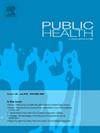Using theory-informed, arts-based research translation to change community attitudes towards people who inject drugs newly released from prison: A randomised controlled trial
IF 3.9
3区 医学
Q1 PUBLIC, ENVIRONMENTAL & OCCUPATIONAL HEALTH
引用次数: 0
Abstract
Objectives
Community attitudes contribute to social exclusion of people with incarceration and injecting drug use histories. Interventions that positively impact community attitudes can strengthen efforts to reduce recidivism and support positive outcomes. This study aimed to investigate the impact of such interventions on public perceptions towards people who inject drugs newly released from prison.
Study design
Randomised controlled trial.
Method
A narrative script on the theme of "exhaustion” was produced from an interview study of post-release experiences. Members of the public participated in a three-armed randomised controlled trial: (1) control; (2) neutral intervention (plain English description); (3) narrative intervention (scripted performance). Surveys administered at baseline, post-intervention, and three-month follow-up measured perceptions of the target group through four key dimensions of stigma. Qualitative interviews were conducted with 24 participants to further investigate responses to the narrative intervention.
Results
1071 participants completed all phases of the trial. Post-intervention scores indicated more positive perceptions among participants in the neutral and narrative intervention arms than the control arm. Effects were mostly more positive for the narrative intervention arm. At follow-up, scores for the neutral intervention arm indicated more positive perceptions than the control arm on the Opinions scale, while the narrative intervention arm recorded more positive perceptions than the control arm on both Opinions and Attitudes scales. Interviews indicated that participants who were not influenced by the narrative intervention believed that people who inject drugs should be held accountable for not controlling their drug use.
Conclusion
Research-informed, co-designed, arts-based interventions can positively impact public perceptions of a highly stigmatised group. Effects of the interventions attenuated over time, suggesting a need for further interventions focusing on perceptions of controllability of drug use.
求助全文
约1分钟内获得全文
求助全文
来源期刊

Public Health
医学-公共卫生、环境卫生与职业卫生
CiteScore
7.60
自引率
0.00%
发文量
280
审稿时长
37 days
期刊介绍:
Public Health is an international, multidisciplinary peer-reviewed journal. It publishes original papers, reviews and short reports on all aspects of the science, philosophy, and practice of public health.
 求助内容:
求助内容: 应助结果提醒方式:
应助结果提醒方式:


